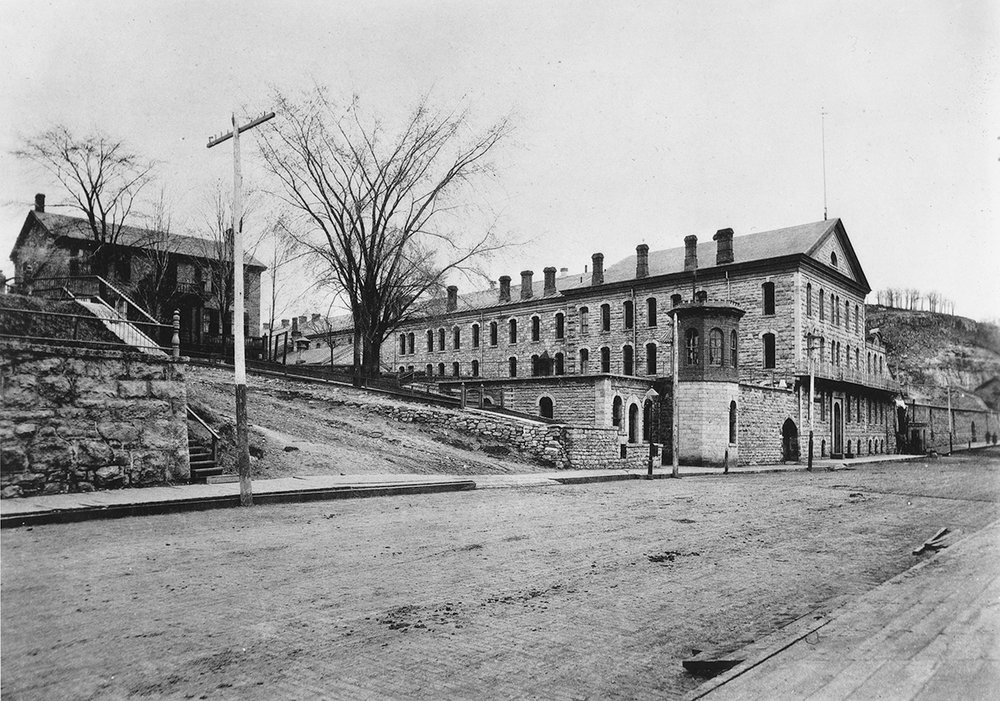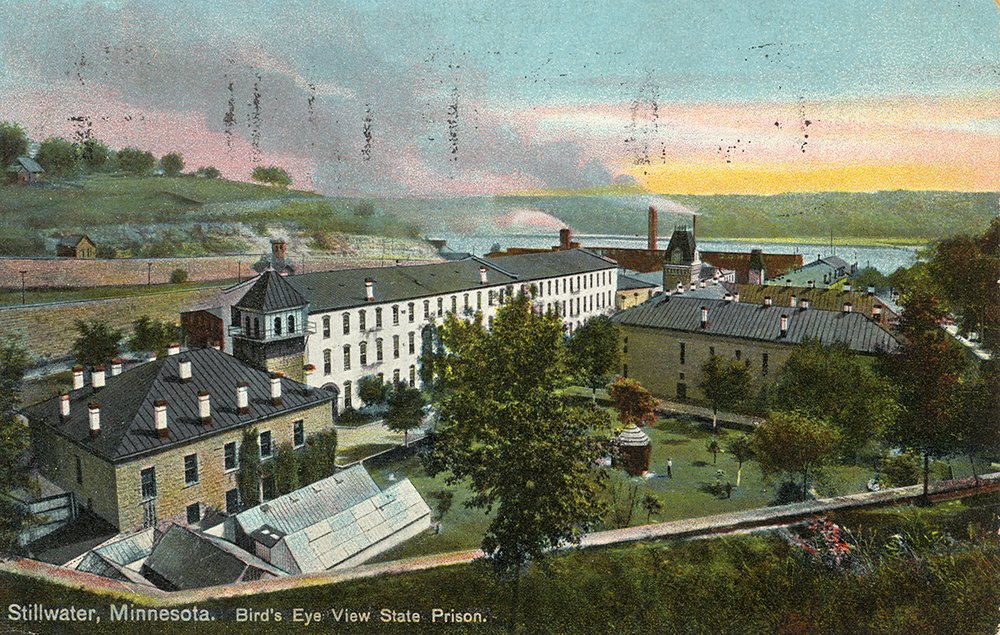Minnesota Territorial Prison
Minnesota's First Prison
After considerable debate, the prison was located at Stillwater by the act of the [first Minnesota Territorial] legislature passed on 1 November 1849, and in 1851 the first prison buildings were erected on a 400-square foot lot in Battle Hollow behind a 14-foot stone wall. The prison opened in 1853 to considerable fanfare; however, there were no inmates until the second year and the cells had to be filled with prisoners from counties which lacked their own jail facilities. Administrative authority over the prison was vested in a board of inspectors (forerunner of the state board of corrections), which advised the warden, a legislative (later gubernatorial) appointee charged with operating the facility. Development of the prison was financed with federal funds, which also covered operating costs.
Stillwater's rise as one of the leading cities in Minnesota was in many ways linked with the penitentiary. Minnesota became a state on 11 May 1858 and the penitentiary passed from federal to state control. As Minnesota's population grew, so did the number of malefactors, and in a succession of improvements mandated by the state legislature the Stillwater prison grounds were enlarged and new buildings were raised between 1858 and 1889. The state prison was a "reformed" institution modeled after New York' s Auburn prison system, which provided for solitary confinement at hard labor and separated sleeping, eating, and working areas. Discipline tended to be lax and punishments were degrading. Inmates left their cells to work together in the prison factory under the rule of silence. They were employed principally in the manufacture of wooden tubs, buckets, and barrels (later expanded to the production of shoes and twine) and were allowed to keep their earnings after paying their board. Although its inmates worked long and hard—receipts amounted to $50,000 in 1870—the penitentiary usually operated at a loss to the state. An interesting footnote to the history of the old prison was the state's attempt to make it self-supporting, so that the citizens would not have to be taxed for the incarceration of criminals. Out of this philosophy of self-support rose the pernicious practice of leasing convict labor to private contractors. This practice was widely regarded as a great evil (at least outside the boardrooms of Stillwater's manufacturers) but was not outlawed until 1895. A new state prison was built at Oak Park in 1908 and the [original] facility was closed, its buildings and grounds sold off and converted to industrial uses.
—Robert C. Vogel, Stillwater Historic Contexts report to the Stillwater Heritage Preservation Commission, 1993.
Destroyed by Arson
After the prison moved to Bayport in 1914, the cellblocks and administration buildings were demolished as a Depression-era work project. The factory and warehouse buildings remained and were used for a variety of industrial and storage purposes over the years. By September 2002, the buildings were on the verge of rehabilitation as hotel and condominium properties when they were destroyed by arson. The Terra Springs condominiums were subsequently built on the site.[1]
References
-
"Arson at the Old Stillwater Prison!", Historical Whisperings 48, No. 3 (Stillwater, Minn.: Washington County Historical Society, 2022).
↩


